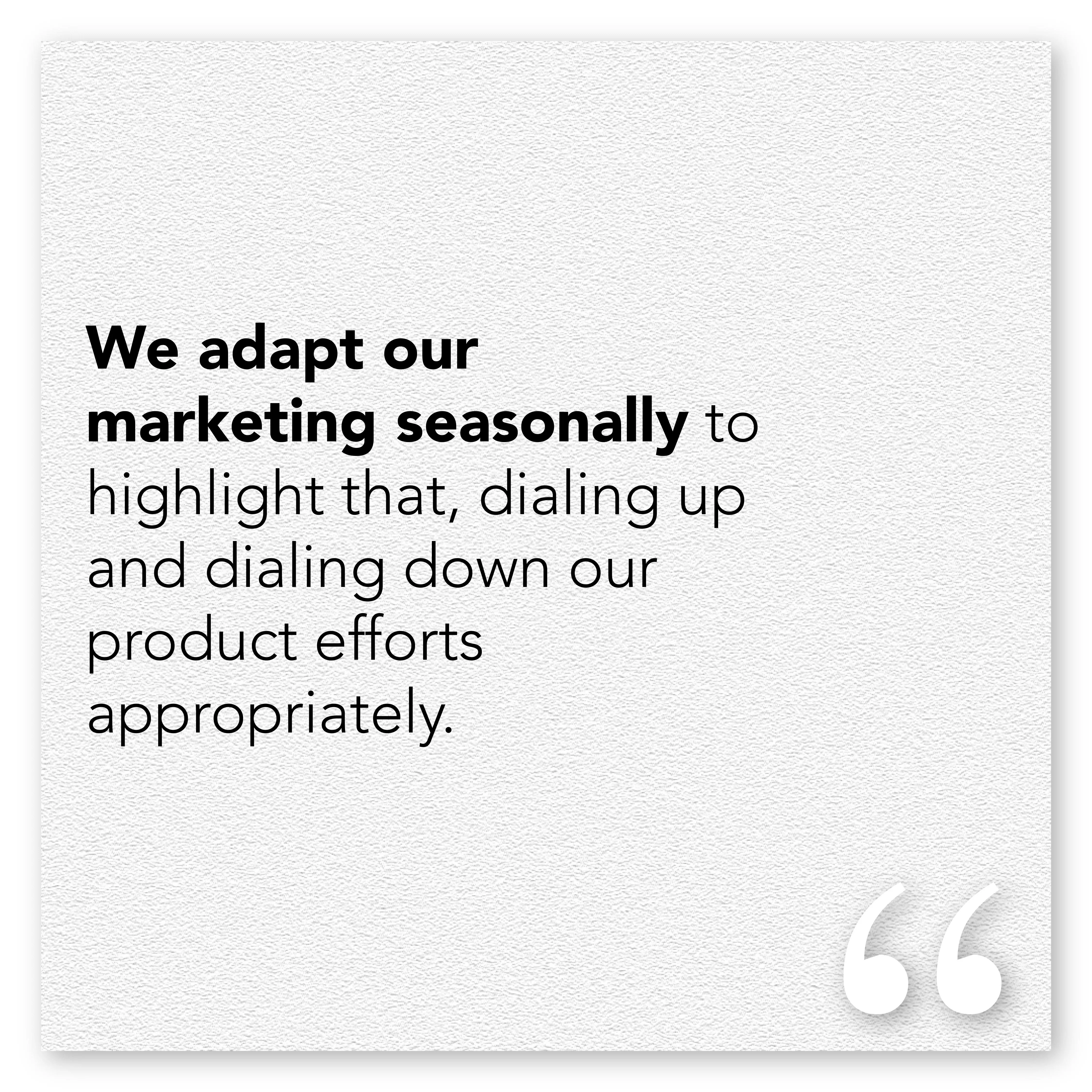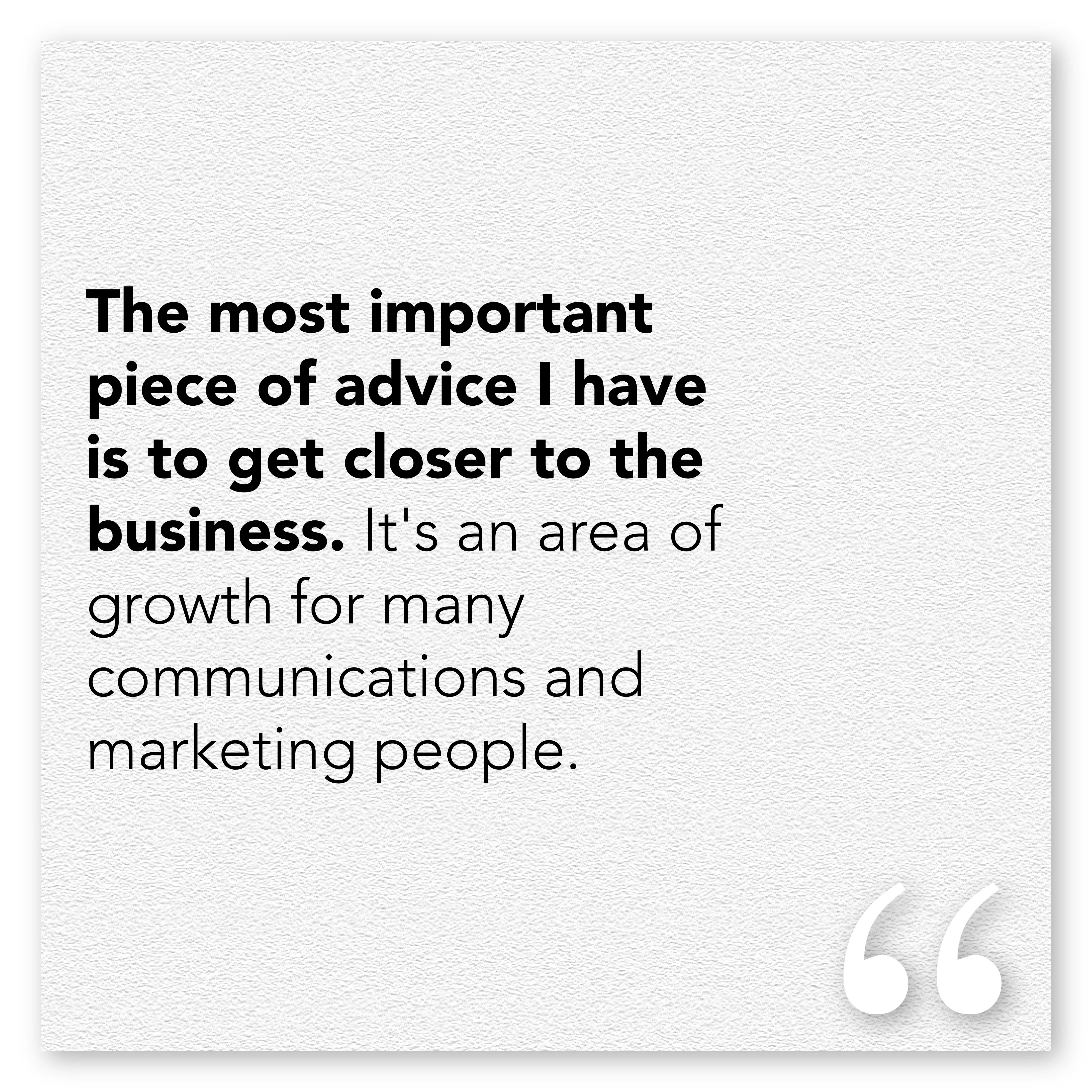Insights
In our Client interview series, “Straight Talk,” Br8kthru teams up with our Clients to explore issues in the marketing world.
We spoke to Joel Swanson, Vice President of Marketing for Affinity Plus Federal Credit Union. Joel has over 30 years of experience in highly regulated environments, including healthcare, financial services, and higher education. He works at Affinity Plus, a Minnesota-based, not-for-profit financial cooperative with 30 branches statewide and over 250,000 members.

Our conversation focused on seasonality and building a successful marketing strategy in the face of change both in and out of the marketing team’s control. As a credit union, Affinity Plus is dedicated to its members. Using customer data, the team at Affinity Plus can plan for its year while remaining nimble.
We spoke with Joel on a Wednesday afternoon as he called in from Affinity Plus’s St. Paul, Minnesota headquarters. This interview has been edited for brevity and clarity.
Close collaboration across the organization is key to the success of the Affinity Plus marketing team.
Andy: Describe a standard year for the Affinity Plus marketing team.
Joel: We’ve adopted an agency-type model in-house, where people on my team are subject matter experts on channels or strategists for different areas of the company. As part of our strategic planning process every year, we meet with those internal business partners like a Client. We ascertain their needs, bring them together, and implement that plan.
We start with a lot of those cycles and map those out. We look at, “What is the literature? What are we expecting to happen?”
Affinity Plus leverages multiple cycles throughout seasons that impact the business — and its marketing priorities.
Andy: What significant events or seasons do you plan around? What is your role in the strategy process?
Joel: There are a couple of different cycles in the banking industry. One of the big ones is in the spring and summer, which are big times for mortgages. It’s when people are looking for houses here in Minnesota.
Auto loans have a couple of different cycles, too. Interestingly, spring is a popular time for auto loans.
June, July, and August are way bigger than the rest of the months of the year for new member growth and checking accounts.
We also notice micro-trends, like Affinity Plus always sees a spike in loans around home and boat show season.
We adapt our marketing seasonally to highlight that, dialing up and dialing down our product efforts appropriately.

My job is to be that connection back to, “What are the priorities for the organization?” and how do we filter that down to my team, with all the things they're bringing from the other departments with their wish lists and needs. That way, we can come up with a prioritization list. That's always the hardest thing to do: prioritize. So, how do you allocate resources? How do you figure out what priorities are?
Prioritization can be challenging, but leveraging data and information makes it easier to choose where to focus.
Andy: How do you incorporate seasons and trends into a larger marketing strategy?
Joel: Much of it starts with the projections that our finance area uses for budgeting purposes to ensure our forecasts align with our activities. That helps us develop a list of priorities and start to map them out together as a Marketing Group.
We start with, “What are the themes for each month?” We map out those themes. Certain things rise to the level of needing their own strategic plan, their own creative environment each year. Then, we create the plans for those specific things that need plans of their own. Along the way, we bring in our partners, such as Br8kthru.
Being embedded throughout Affinity Plus allows the team to anticipate shifting needs and respond rapidly.
Andy: Once you have a marketing strategy, how do you adapt or pivot when you notice changing trends?
Joel: We’ve been able to get upstream and embedded with some of the groups making those decisions.
For example, a year ago, the industry literature expected that interest rates would start dropping significantly by mid-year, impacting mortgages. Of course, that didn’t happen. Instead, rates stayed very high and even went up a bit.
What we could do with that was come up with campaigns and assets that said, “Okay, if we can’t get loans, let’s figure out what we lean into. What are consumers looking for today?” We could pretty quickly stand up some campaigns and assets for CDs and other deposit products because we had insight into the market and were in different internal committee meetings that were looking at trends.
Different tactics and strategies suit different situations, which is why being able to pivot is important in a business with such seasonal trends.
Joel: Because my team is embedded in other teams throughout the organization, we can get ahead of many of these trends or at least respond quickly.
When we pivoted to CDs, nobody in our industry had been having to highlight those for years — it had been a loan-based marketplace for a long time. So we suddenly had to stand up a lot of assets to ensure we had material for all the products we hadn’t had to worry about in years.
One of our goals for this year has been, “Let’s make sure we have at least something for everything in case we need to stand things up quickly.” Another way that we're trying to adapt is to preempt.
We can respond quickly to a changing market by dialing up and down some of the daily search tactics. We can do things quickly to impact finances when the market changes. Other tactics are longer tail, like more complex geotargeted programmatic.

Identifying and expecting that certain strategies work best in certain moments and that there are tactics we can leverage for pivoting is helpful. Everybody just knows, “Hey, change is going to happen. Here are the two or three things we can do.”
A mixture of process and flexibility achieves the desired results while staying nimble.
Andy: How do you and your team pivot as new considerations come into play?
Joel: We try to plan three months ahead. And so we're planning for and creating a process for 80% or so of the work and making sure we budget in 20% or so for things that allow us to adapt and be opportunistic from a marketing standpoint.
As far as specific strategies, there are some partnerships that we have chosen for the long term. Those are priorities for us. Partnerships are important to us because they're multi-year and take a lot of intentional work to squeeze the value out of them. So that's the other thing we do prioritize.
We also prioritize our digital marketing strategy because it is so measurable. Digital marketing is a strategy with a lot of tactics that you can use to adapt quickly to the marketplace.
Joel’s advice? Get closer to the business, and don’t be afraid of processes.
Andy: What is the top tip you’d share with other marketers in similar positions with seasonal and outside considerations impacting their business?
Joel: The most important piece of advice I have is to get closer to the business. It's an area of growth for many communications and marketing people. If you're close to the business, that's when you start to be able to be a trusted advisor to the leaders around the organization, and you get a seat at that table. You get to impact what the organization does and learn about things way upstream.

The other thing is that workflow processes are your friend. Having a project management function within your Marketing Group is also important, whether it's part of someone's job or whether you can actually hire project managers or traffic coordinators who keep things moving. But that's another way to connect with the rest of the businesses.
Partnerships are Key to Success
Partnerships like the one between Br8kthru and Affinity Plus Federal Credit Union open new doors. From rapid management of paid media to supporting strategic initiatives designed to drive leads, Br8kthru supports Affinity Plus as a strategic external partner. Affinity Plus partners with Br8kthru on search engine marketing (SEM), paid media, analytics configuration and tracking, and more. For more information on how we can support your business’s seasonality, contact us. And keep an eye on our Insights for the next Straight Talk interview.